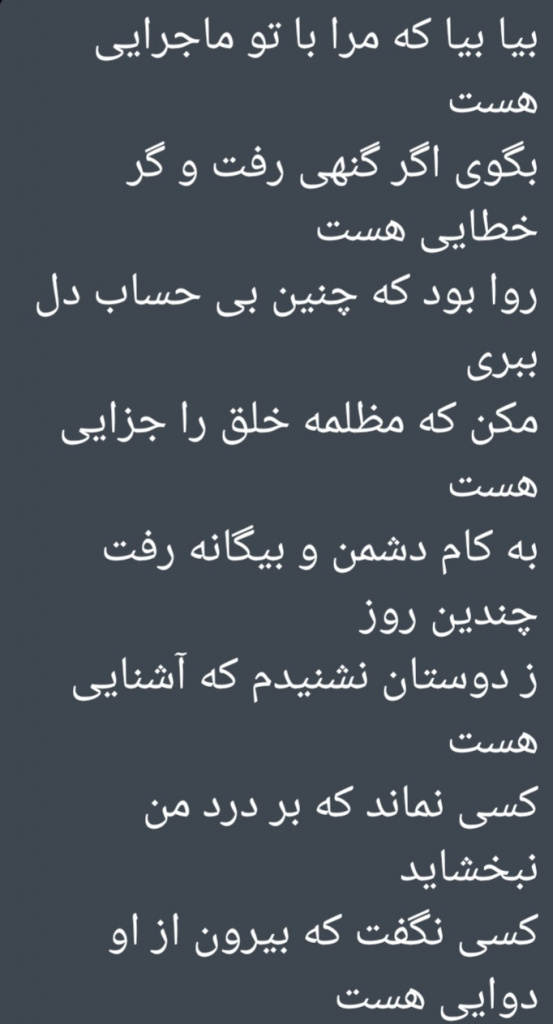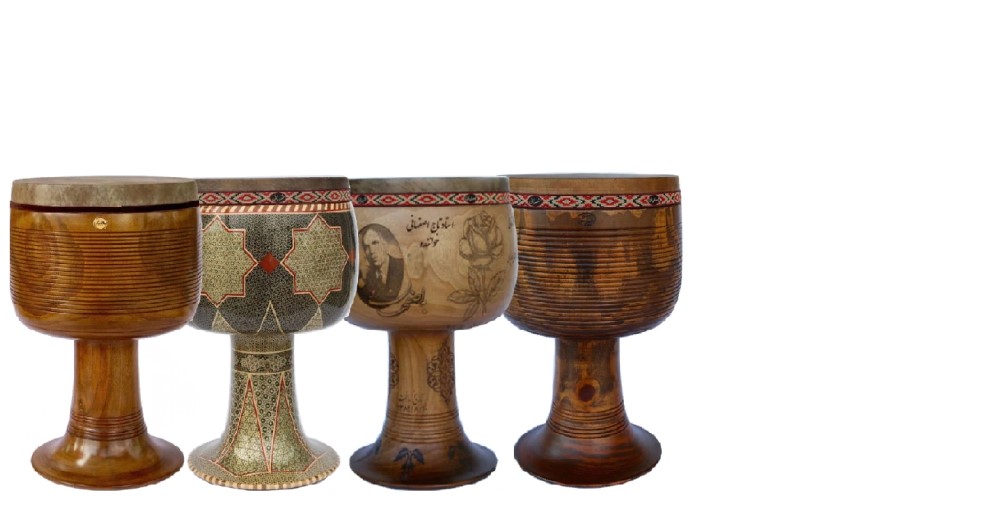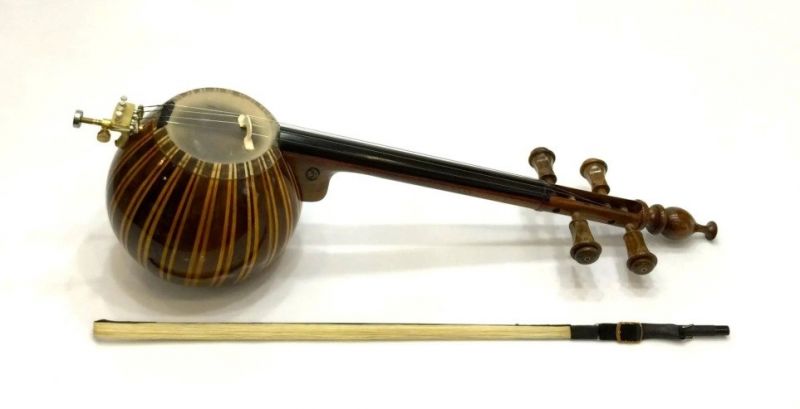In clichéd language, Iran ‘grab the headlines of the front pages’ today, and they are alarming due to the events in Israel and the Gaza Strip. Iran is being demonized, and the Iran authorities are also unfriendly in response. Ordinary readers get the image of the Iran people who, as usual, have nothing to do with the statements and even the actions of the today’s people in power.
Iran is a treasury of ancient wisdom and literature. If we don’t understand anything that delights another nation, we often either ‘move away’ from it or even deny it. But if you are open to the world and read more carefully the cultural and historical pages trying to grasp their meaning, the effect will be opposite. Today, people have a chance of listening to and ‘hearing’ the true Iran rich in its centuries-long high culture. This is the Iran of Hafez, Omar Khayyam, Firdausi, Saadi and other poets, whose works and their musical performance make you imagine yourself as a resident of Ancient Persia.
Today, you can hear a poem by Saadi, Saadi Shirazi. This is what the neural network produces about him:
“Saadi is a famous Persian poet, writer and thinker. He was born in 1203 in Shiraz, Iran. Saadi is known for his works full of wisdom and spirituality. He wrote many poems, stories and philosophical treatises.”
Such poems can be called, more correctly, ghazals, this is an example of the Persian versification. The Persian poets started writing ghazals from the 9th century. A hero, in whose name a ghazal is written, is usually the author himself who opposes himself to another beloved, to the whole destiny, to the sorrows of the world, to the ruler, even to the Almighty... A hero of a ghazal strives to understand himself and find himself as an individual writing about love and philanthropy, to overcome the chasm between people, but in the end, this contradiction is never resolved in ghazals, but leaves a reader to meditate and take anyone’s side in the dispute. It is this feature that gives ghazals the features of a ‘compressed spring’ - the highest emotional tension.
Translated from Arabic, the word ‘ghazal’ means ‘celebrating the beauty of a woman’. The ghazals are as popular in the Persian and Turkic lyrics as the sonnets in the European poetry; it is a genre in which the cultural identity of the Persian and Turkic peoples is revealed, and the Iranians are, of course, the leaders in this.
The Iranians admit that many of them do not understand these ghazals. They are written in an Old Persian using free forms, and the usual formal grammar is practically not observed. A thousand years ago, simple words put together had a different meaning.
When you understand ghazals, it is fascinating about them that the verses were written a long time ago and also their live performance. In fact, these are not poems in our traditional understanding, but they are not songs either, although they are read to music. Rather, they are like epic tales told from the first person, in which there is usually a dialogue between the poet and one or more other persons, and therefore, intonation and voice are important.
The Iranians absolutely adore such concerts, even when they don’t understand everything. But this is not a problem. The allegorical character of forms and different meaning makes the poems eternal and makes people argue, discuss, and meditate. There are only a few talented ghazal-tellers in Iran who can read, or rather sing what we are accustomed to call and consider the poetry. These singers are like Russian narrators of ancient epic stories, and the ghazals performed by them are no longer just poetry, but ancient wisdom. This is exactly the way the ghazals accompanied by music were recited in the court of various shahs many hundreds of years ago. You can imagine this! Listening to and understanding the ghazals make a spiritual bridge between the past and the present days. Despite the Iranians’ passion for modern music, thousands of people attend the concerts of ghazal-tellers.
In the usual sense, it is rather impossible to translate such a poem into Russian. They do not express anything directly as the allegories predominate. That’s why every Iranian ghazal-teller interprets and sings the ghazals in his own way. You can try to translate a specific ghazal performed. This is what we tried to do with the help of an excellent Iranian teacher. Soheila Izadi, a teacher with many years of teaching Persian to foreigners, helped ‘catch the key-meaning’, and when we were fascinated with the poem, we understood that she had succeeded.
You may have heard these ghazals before, sounding like - I would say - the howling of the wind, and you did not even think about the very words and deep meaning that is very difficult to understand without the help of an Iranian who knows how to understand and explain these verses.
This is the ghazal in Persian

This is the translation:
Come, let me make a love journey with you.
It’s a mistake to think it’s a sin.
It was normal for you to be so reckless.
Don’t think that chains of love are a punishment.
Both enemies and strangers were happy for several days.
There are no acquaintances left
Who could understand my deep pain.
No one had medicine for it.
Love is the cure for my love pain! (non-poetic translation)
You can use this link to listen to the original performance. It is performed by Homayoun Shajarian, the son and spiritual heir of Mohammad-Reza Shajarian, the greatest vocalist and performer of traditional Iranian music.
It’s funny that reading or singing will start a minute and a half from the beginning of the entire composition. Apparently, the ghazal-teller was getting ready.

The captions clearly correspond to the words pronounced during the performance. To create music, Iranian instruments are used, such as a kamancheh, tar, tombak/tonbak, daf, and non-Iranian ones like a guitar, violin, drum, etc.

So, during their trip to Iran, travelers can both see and ‘hear’ the Ancient Persia.


